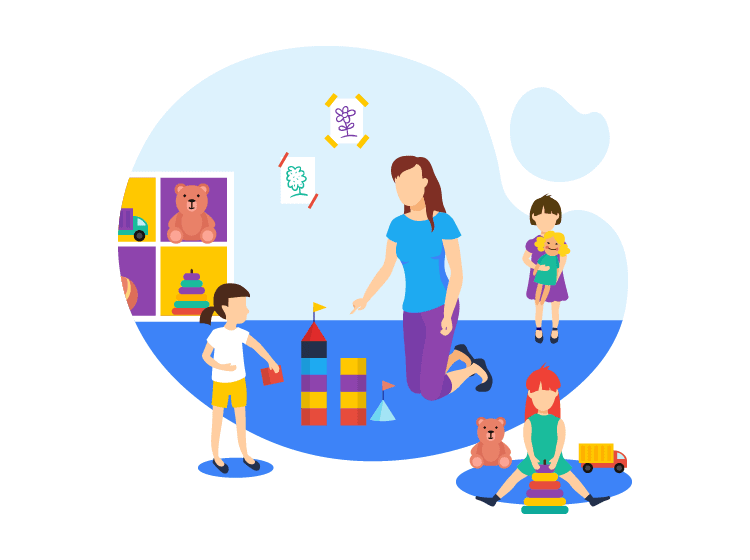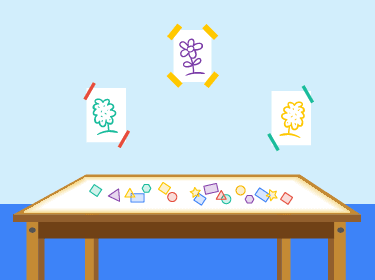Empowering childcare centres with tools to simplify operations and enhance outcomes
Automate payments, manage subsidies, and ensure financial accuracy with ease.
Effortless communication between families and educators for instant updates, messages, collaboration, and conversations.
Track, document, and celebrate every milestone in a child’s journey.
Simplify enrolment, manage waitlists, and track attendance effortlessly.
Streamline scheduling, performance tracking, and team communication.
Keep families informed with real-time updates and daily reports.
Discover how Parent can transform your childcare centre’s operations
Access a variety of tools, guides, and insights to help you get the most out of Parent
Stay updated with industry trends, expert advice, and childcare management tips.
See how childcare centers like yours achieved success with Parent.
Find quick answers to the most common questions about Parent's features and services.
Join live sessions or watch on-demand webinars for in-depth guidance and tips.
Get step-by-step support with articles, guides, and troubleshooting resources.


Early Childhood Development and Learning were featured in the SONA 2018 and 2019, among many other important public forums over the last couple of years.
In terms of childcare management, it is important to understand the policies and the framework that govern this sector.
Understanding the policies and the impact that this has on settings can be somewhat overwhelming at times, especially when one feels that one is not really part of the system.
I have worked in the sector for many years developing curricula and training programs for practitioners.
One of the most common complaints I get from practitioners in the sector is that they do not know what quality provision standards must look like.
Practitioners are overwhelmed by the volume of information available but do not know or understand how to plan and provide quality learning experiences to the children in their care.
My standard answer to these questions often includes an explanation of the age, stage, and needs of children – our focus needs to be on the child, and on what the child needs to develop, and on how to acquire the necessary skills to progress to Grade R.
Settings must have standards that allow for learning opportunities that address the needs of children according to their stages of development, not their age necessarily.
Practitioners must be guided to observe and monitor children’s development and not focus on the activities or themes we so often push to “show” to the parents what their children did at school.
Instead of turning to social media for activity ideas practitioners must be guided to turn to developmental standards based on the National Curriculum Framework.
Children can and will never be developed in a holistic manner if a curriculum is not followed to observe and monitor learning outcomes.
Understanding the holistic development of children and the effective implementation of the framework in the class is even more essential now that the migration of the ECD sector from the Department of Social Development to the Department of Basic Education is taking place in South Africa.
Settings will be required to get their house in order. This being said, let’s look at the framework that the South African Government developed for the sector.
The first document that we need to consider is The National Early Learning Development Standards (NELDS) 2009 – a curriculum-related policy initiative focusing on the early learning needs of children from birth to four years.
NELDS provides early learning standards and desired results of expected learning achievements for young children in a designated age range.
NELDS must be used to develop a curriculum and other learning materials for the sector.
The NELDS document is in fact the overarching document that gave birth to the National Curriculum Framework (NCF).
The purpose of the NCF is to facilitate learning and development in a holistic manner.
The NCF focuses on the first 1000 days and highlights the windows of development and opportunities for intervention or support to children in the age group birth to 4.
For practical purposes, the NCF suggests that children must be divided into the following age groups:
With provision for the next age group 48-60 months by assuming they will move to Grade R.
If one studies the document, it also identifies Early Learning Developmental Areas (ELDAS).
These are the domains of development. Within the classroom, the ELDAS must be included in the daily program or the overall schedule of the setting.
Each ELDA has aims or subheadings that must be used as the guidelines to plan activities according to the age and stage of individual children.
The aims will guide the adults to plan and facilitate learning experiences and the ELDAS should guide one to understand the holistic development of the child.
Activities in the class can therefore not be theme-orientated or “loose” from one another.
Activities must be planned holistically and support the different aims and developmental areas.
The NCF provides guidance on how to develop a curriculum appropriate for babies and young children.
When we look at the image below it requires us to use the NCF document to plan learning opportunities that are developmentally appropriate around individual children by interacting and providing opportunities that boost confidence in young children.
An integral part of building confidence is to allow children opportunities to explore and take control of their own learning by providing free play or child-initiated activities.
As discussed earlier the ELDAS are the overarching domains or areas in which we need to plan experiences for children’s holistic development.
Your curriculum must focus on all of these developmental areas.
We like to use the umbrellas analogy to explain the developmental areas or ELDAS.
The handle of the umbrella is the ELDA or the developmental area.
If you hold onto the umbrella’s handle and you open it, you see the true value of the umbrella or in this case the opportunities.
You cannot use an umbrella if you do not open it.
If we open the developmental area and look at each in more detail it provides us with 1000’s opportunities or activities to support children to develop certain skills within the developmental area.
Let’s look at the umbrella that is now open – it has wires that support the fabric that makes it useful.
The same way the aims or subheadings within the ELDA will support the development of the child.
Let’s look at the ELDA ‘Well-being’ as the handle of our 1st umbrella.
In this case, our umbrella has 5 wires or aims that provide us with the aspects or aims that we must use to plan for the child’s development within this area.
Each one of these wires in our umbrella will support the fabric to be effective.
The fabric of our ELDA umbrella is the activities that you need to plan to develop skills in the 5 aspects of learning.
A practical example to explain our Well-being umbrella – as a practitioner I need to develop the physical skills of children in my class.
For this, I need to open my Well-being ELDA umbrella.
I need to choose one aim or aspect – in this case, physical abilities; what support or fabric do I have that supports me from which I can choose?
I have fine motor skills, I have gross motor skills, etc. I can now plan one activity, let’s say playing with play dough, and make sure that I wash the children’s hands before playing with the play dough (Aim 2), that I provide safe tools to cut or manipulate the play dough (Aim 3), and I can encourage and interact with children during the activity giving praise (Aim 5).
In this activity, I used my umbrella effectively to support and develop many skills within this specific developmental area.
It is important to note that the umbrellas are not individual but interconnected. This activity also supports all the other ELDAS, because we need to develop children in a holistic manner.
Our second umbrella or ELDA is Identity and belonging. In this developmental area, we have only 4 aims. If we use our play dough activity in this context it will also support this ELDA and its aims as follows:
While children are playing, they will explore the different tools and use them confidently (Aim 1), children will then ask to wash their hands after the activity or during the activity (Aim 2), and children will interact with their peers and teacher during the activity (Aim 3).
Our third ELDA or umbrella is Communicating. I think it is rather obvious that our tried and trusted play dough activity will support our third ELDA.
Working towards our fourth ELDA we need to think a little outside of the box to extend our playdough activity. How can we do this? Roll little playdough balls, count the balls, show me the big ball, etc.
The fifth ELDA will really push us to interact and ask questions while we are part of the play experience. Playdough is not to keep children busy or to only develop fine motor skills.
To teach children problem-solving skills and creativity we need to ask open-ended questions – allow children to lead and take charge of their own learning to a certain extent.
‘Who can make an umbrella with the playdough? What will you need to make an umbrella?’
Our last ELDA often flows from play or is supported by the other developmental areas.
Using a rolling pin to roll our playdough is technology. Also, allowing children to explore and investigate through free play activities how umbrellas look and work will provide them with a valuable understanding of the world around them.
This is all good and well, and we all enjoyed playing with the play dough, but how do we now develop a proof, or document the learning and development that took place? By observing and assessing against the guidelines provided by the NCF.
The topic of assessment and observation is a topic for another day, as it is complicated and must not focus on what the child cannot do but rather on what the child can do.
A final thought and one that connects with my previous post on how technology and the use of artificial intelligence (AI) can support practitioners to keep up with the demands and changes in the Techno world that left the Early Childhood Sector lagging far behind, is to understand that choosing the correct software will integrate learning frameworks and developmental standards in an easy to use application for practitioners.
This is the way to move the sector into the next generation by providing quality care and connectivity to parents, administrators, and practitioners in a safe and controlled environment.
The recently launched Parent Software is the only application that offers a direct link to the NCF and assessment standards.

A lightbox is a versatile tool that can be used for everything from open-ended play experiences to arts and crafts, to teaching academic concepts and more! Generally, it is used to explore objects with the added dimension of an upward-facing light. It is brilliant for investigation and experimenting. There is an extensive selection to choose from, including light panels, mood light shapes, and light tables. Or you can even make your own!
There are hundreds of possibilities for lightbox play and learning ideas and it is suitable for children of all ages, supporting their holistic development. It can be used for almost any type of activity as its’ most effective benefit is the fact that it creates an inviting learning space and encourages children to engage in learning activities through play without even realizing it.
If planned effectively the lightbox can become a center of learning and appeal to children, whose attention we struggle to grasp. When you infuse your light table center with opportunities for science, maths, literacy, and mark-making it quickly becomes a powerhouse of learning.
For more information and lots of great practical ideas, sign up for Parent™‘s new LightBox CPD and check out “The Ultimate Light Table Guide”, a fun group on Facebook that shares fresh ideas.
Early childhood years are a crucial phase in the development of children into mature, responsible, and well-rounded individuals. We noticed the dire state of preschool and childcare management tools in 2014 and immediately set out to change that. By 2015, we had released Parent, an ultra-fast, super-easy, and delightfully feature-rich preschool management app. Parent™ brings efficiency and speed to your childcare management while saving you, the parents, and the children invaluable time.
Currently, Parent™ is a lead childcare management software. Our platform has been embraced by childcare providers across seven countries, supports multiple languages and curriculums. We are committed to creating positive partnerships between parents and their childcare center, allowing you, as educators, to spend more time nurturing each child in your care.
*We would like to give credit to the Department of Basic Education for all diagrams used in this document. We used the South African National Curriculum Framework for Children from Birth to Four, dated February 2015 © Department of Basic Education, as the basis for this article.


